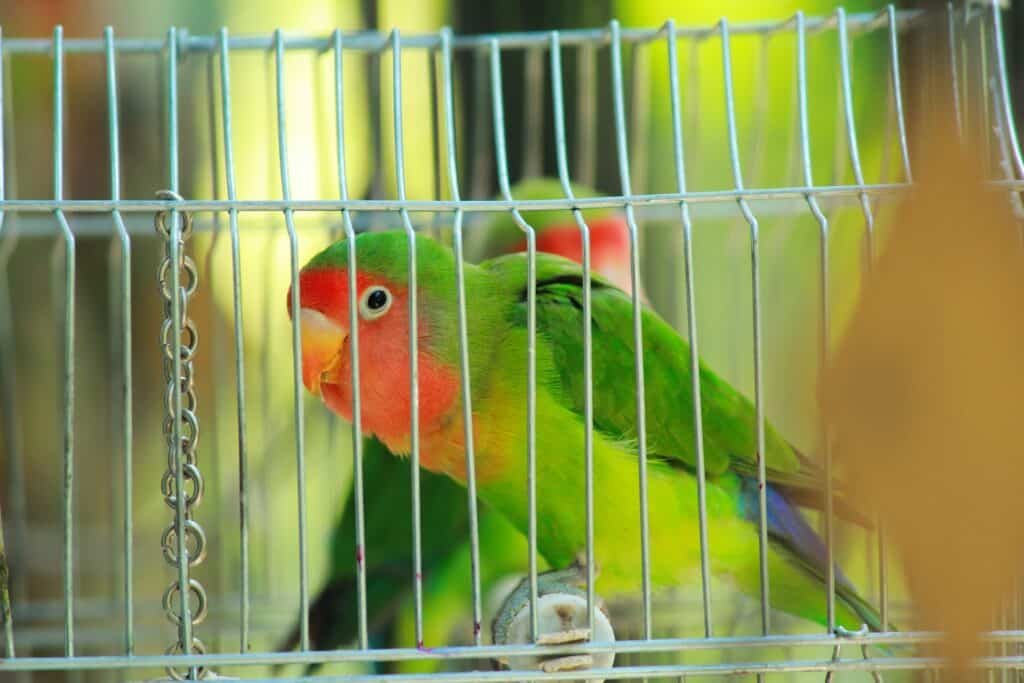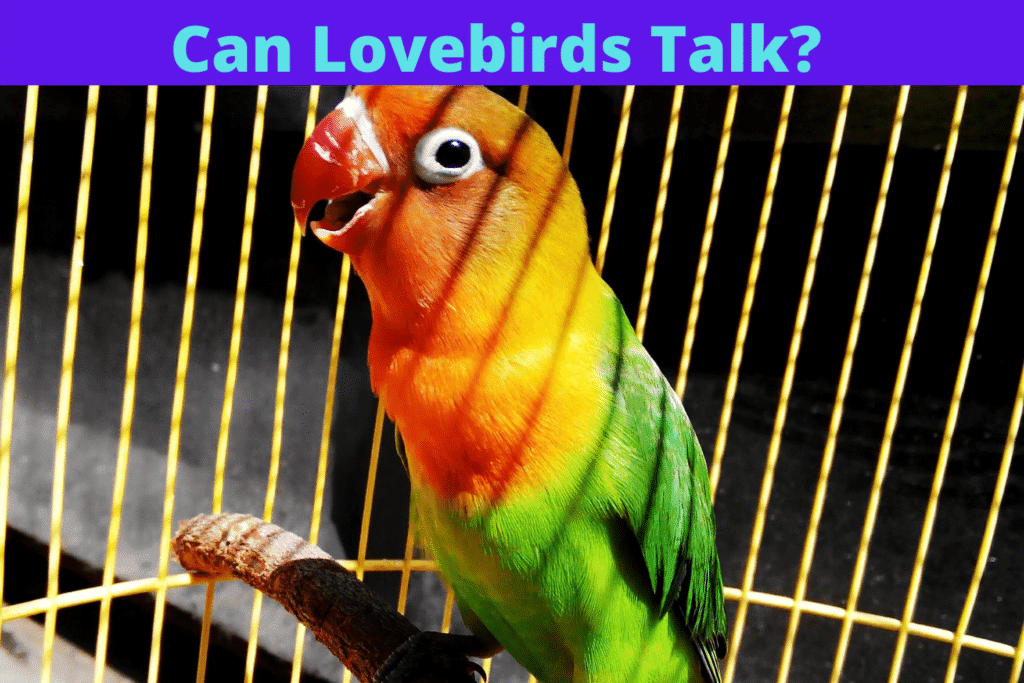Love birds are popular in households. Their unique coloration and the strange behavior of dying when not accompanied by a mate make their prized pets. But aside from their looks and behavior, lovebirds might have another trick under their sleeves (or wings).
I guess you don’t know this, but love birds are parrots. Yes, they’re part of the bird group that has the ability to mimic human speech. But why can parrots speak anyway? Their brain is structured differently from others. Within their brain is an outer shell part of a parrot’s brain that experts call the song system.
Lovebirds usually produce a loud screeching sound when communicating with their partners. But since I ranted that these birds are parrots too, you might be asking…
Can Lovebirds Talk?
Lovebirds possess the ability to talk. However, this happening is as rare as shooting the ball through a basket with your eyes closed.
Don’t expect lovebirds to speak phrases or sentences. If you want avians that can speak a lot, you’re better off raising African grey parrots, parakeets, yellow-crowned amazons, or double yellow head amazons.
Most of the time, lovebirds produce a sound that’s strikingly similar to the high-pitched screeching of a motorcycle’s wheel on the road.
Can They Learn On Their Own?
Lovebirds spend their merry time with their mate. And so, they might not take notice of the sound that’s around them. This makes it hard for them to learn human speech on their own.
But with gradual and patient training, lovebirds can speak. However, as I said earlier, don’t expect much. When lovebirds speak, speech is mostly limited to one word or two words.
Nonetheless, even if they learn to talk, the sound that they made is far from the cognizable human speech that comes from African grey parrots and parakeets. You will have to listen closely to understand the specific word or words that the lovebirds are saying.
What’s The Success Rate?
If we compare the lovebirds’ ability to speak to African grey parrots, the success rate is 40% – 50%. It’s not that much. Nevertheless, having a chance is better than not having any, right?
It will take several years before your lovebirds can speak. Expect to continue teaching language to them for at least three to five years.
And you might not get immediate results too. As you teach them, the lovebirds won’t show any signs that they have learned something. All that you can do is wait for the moment when they get to give out a chirp that closely resembles the word you want them to learn.
With that being said, you need to know that patience is key. Keep teaching them even if the lovebirds don’t show signs of learning.
Which Lovebirds Are The Most Suitable For Teaching?
Lovebirds that are a year old are the most ideal. It’s because their brain is still adapting to inputs from their surroundings. And so, they can easily pick on things taught to them.
So if your lovebirds at home are three years old by now, you might want to get a younger pair instead for training. Don’t be pessimistic about this because it’s merrier to have more lovebirds. Don’t you know that they become more active when in large groups?
You also have to think about your reaction. Aside from being young, the lovebirds must also be very reactive to human contact to learn how to speak. Connection is key when teaching. And if they react easily when you establish contact, building a connection will be easy.

Let’s Teach The Lovebirds How To Speak!
Establish Trust First
You can’t teach the lovebirds if you don’t establish trust. A bond will make it easier for them to take notice of you and your actions.
To establish a bond with the love birds, stroke them slowly every day while they’re in the cage. Once they start resting their head on your fingers, it’s time to take them out and put them on your shoulders.
You know that the lovebirds have warmed up to you when they comfortably roost on your shoulder or your head.
By the way, I don’t have to emphasize that feeding them is also crucial since it’s already self-explanatory.
Teach The Words
Proceed to teach the words next. Speak two-letter words in front of them; examples are at, in, on, up, etc. They don’t have to learn this. The purpose of trying to them two-letter words is to prepare their brains to learn three-letter to four-letter words.
Play Word Mp3s
Word Mp3s will help. Play these at times when the lovebirds are doing nothing in their cage. The equipment that you need is a small Bluetooth speaker and your phone. Remember to set the speaker at mid-volume or lower so or else, the lovebirds might suffer from discomfort.
Repetition and Reward
At the end of each training session, don’t forget to give the lovebirds a treat. Also, remember that consistency is key. So for the lovebirds to learn successfully, don’t forget to devote teaching them for 30 minutes or an hour every day.
Conclusion
Lovebirds can speak but need a lot of training. So if you want them to learn how to talk, be prepared to spend a lot of time spouting words in front of them.
Due to their inherent high-pitched voice, it’s hard to discern the words that the lovebirds are pronouncing. So, don’t set your expectations too high or you might get disappointed even if the lovebirds do learn to talk.



